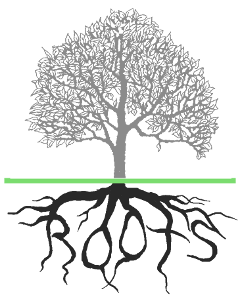 Gender inequality in Haiti is as much a living atrocity as it other parts of the world. Women are devalued and oppressed in spite of their human rights, contributions, inherent nurturing, strengths, knowledge,and unifying the household and the world. This phenomenon is escalated in impoverished countries where the
Gender inequality in Haiti is as much a living atrocity as it other parts of the world. Women are devalued and oppressed in spite of their human rights, contributions, inherent nurturing, strengths, knowledge,and unifying the household and the world. This phenomenon is escalated in impoverished countries where the  political and socioeconomic infrastructure are weak in legislation, law enforcement education, employment, etc.
political and socioeconomic infrastructure are weak in legislation, law enforcement education, employment, etc.

Gender violence is widespread in Haiti; where several groups that are particularly affected, including women in general, women from lesbian, gay, bisexual and transgender communities, and girls. After the 2010 earthquake, women and girls became increasing at risk for sexual violence due to the camps that were constructed to house the displaced victims. Sexual assault escalated with little reporting because women feared retaliation, discrimination, and punishment due to the government’s inability to effectively respond to allegations (Social Institution& Gender Index, 2016).

Gender inequality transcends multiple aspects of life for Haitian women. A small portion of Haitian marriages that are arranged or forced, and not uncommon in cases of rape or pre-marital pregnancy. Approximately 85% of these unions in Haiti take the form of plasaj – or unmarried ‘consensual’ alliances (Social Institution& Gender Index, 2016), however, it being ‘consensual’ is questionable. In addition to rape and sexual abuse, incidents of survival sex (the exchange of goods and services for sex occur).
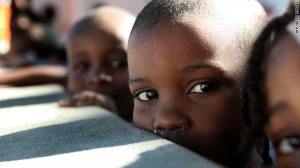
Trafficking of children is common in Haiti. The children, known as restaveks/restavec, are generally from your more rural areas, and are sent to stay with relatives or friends in the bigger cities. They agree to pay for the child’s education in exchange for domestic servitude. While this may appear to be an ideal situation, it is sometimes met with harsh treatment, torture and abuse.
According to 2014 statistics, women constitute 52% of the 8.1 million Haitian population, but only 3.5% of the parliament. Per the gender inequality index, Haiti ranks 138 out of 188 and its value is 0.603. Maternal mortality is 350 per 100,000, while he adolescent birth [age 15 to 19] is 42%. 52% of boy and only 47% of girls receive an education, the total average years of schooling is 4.9. Literacy rate is 61% for males and 57% for females. The labor force is made up of 60.9% of women and 71% male. Haitians have a life expectancy rate of 62.1 years (Wikipedia, 2016).

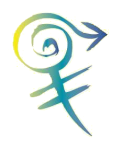
In 2008, Haiti passed a decree (Décret Modifiant le Régime des Agressions Sexuelles et Éliminant en la Matière les Discriminations Contre la Femme) modifying offences of sexual aggression to eliminate discrimination and domestic violence against women; however, it was not a legal decree and, therefore, does not modify their Penal Code. The decree does not address the common law “plasaj”, and not until 2013 did it covered marital rape. Labour Code in Haiti provides for equal working conditions for women and men, but there are no laws regarding sexual harassment, and the Code does not address the unequal pay or disparities in job opportunities or advancement in the workforce (Social Institution& Gender Index, 2016). In the 1980′s, Haiti ratified the CEDAW (convention to eradicate discrimination against women), but women are still under represented today, with only 25% of government employees being female.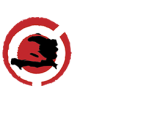
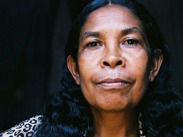
Haitian National Police’s Co-coordinator for Women’s Affairs, trained officers to receive and process women victims in Port-au-Prince; however, there are many other jurisdictions where this does not occur. Some revisions to the Penal Code, proposed in February 2013, to assist victims by providing state-funded legal aid and prohibiting discrimination based on sexual orientation (Social Institution& Gender Index, 2016).

Haitian women are committed and organized in their effort to change their situation and play a key role in Haitian culture. They are referred to as the “Poto Mitan” (pillars if society ) of their familial and social structures (Haiti Net, 2016).
Citations:
Haiti Net. Gender in Haiti. (n.d.). Retrieved March, 2016, from http://www.northeastern.edu/haitinet/gender-in-haiti
Social Institutions and Gender Index. Haiti. (n.d.). Retrieved March, 2016, from http://www.genderindex.org/country/haiti#_ftn2
Wikipedia the free encyclopedia (n.d). Women’s rights in Haiti. Retrieved 2016, from https://en.wikipedia.org/wiki/Women%27s_rights_in_Haiti
Finally, I start to believe that all underdeveloped countries are the same with same sufferance and same path when it comes to women. Women don’t have any say and images I saw in the video make me feel like I was somewhere in Africa with the same look on women faces that tells all about their everyday lives. The contrast is that all women in the world are the key for the economy for their role in attempting to take care of children who eventually become valuable assets for the society.
LikeLike
I agree with you. When I watched the video after watching the videos on Rwanda, I felt like I was watching the same people… Not just because they looked similar, but because they had the same expressions and the same looks.
LikeLike
Your post outlines some serious gender inequalities. I guess one can’t be surprised that they exist. When a country ranks 138 of 188 that is a hint of what is to come. I found it amazing the Haiti scored so low. I was optimistic because being one of the few French descending locations left in the western world. Most of Latin America ended up with Spanish and Hispanic culture which is an argument in itself. I wonder whether the colonization under the French created a different path than had Haiti been controlled by the Spanish Empire.
LikeLike
Being the poorest country in the Western Hemisphere, and resources pouring into the country from multiple sources, it is disappointing to see women struggling as much as they are to gain basic human rights. The high maternal mortality rate is most depressing to me, as it seems fundamental to the well being of women and a strong indicator of the lack of investment by the government to improve well being. Haiti has such an opportunity to develop based on the amount of attention and resources it receives, yet historically they seem unable to progress. I wonder if this has to do with a high level of corruption. Until leaders make a personal commitment to improving the lives of the people they serve, the status of women and their economic development seem unlikely to improve any time soon.
LikeLike
Wow, very riveting post. I wasn’t VERY aware of the gender inequality in Haiti, however, I did hear lots of information about the sexual abuse and harassment that women were subjected to in the camps after the hurricane. The sexual abuse was so bad that many women were afraid to go into the camps and even stayed in their flooded homes to avoid beings sexually assaulted by men and guards. You provided a lot of figures as well, which really showed how “behind” Haiti is with educating both women and men within the country. I wonder how far women’s activism would have to go to change the penal code so that women can feel more protected by their government.
LikeLike